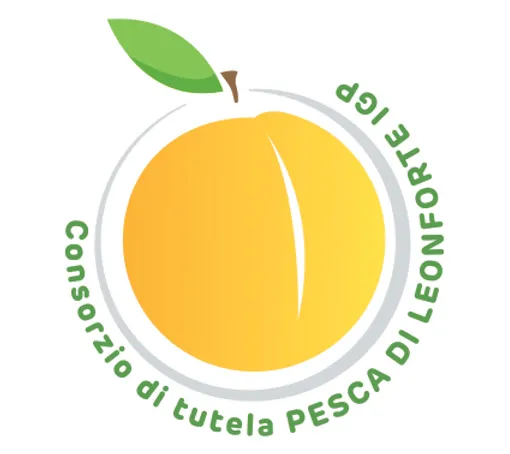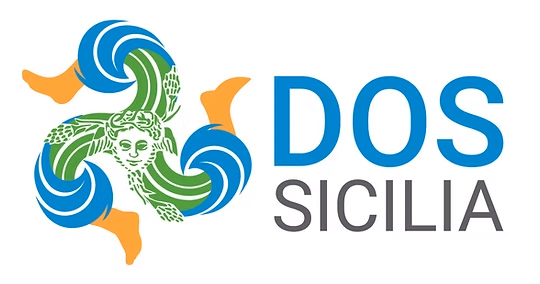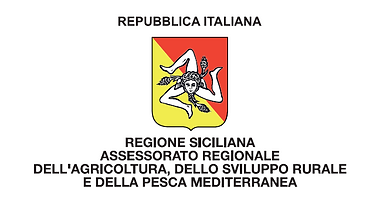
Consortium for the Protection of Fishing of Leonforte PGI
Piazza Branciforti, 2 – Leonforte (EN)
Tel: +39 0935 904515
www.pescadileonforte.it/
The Late Peach “di Leonforte PGI”, also called “Settembrina”, is cultivated with a centuries-old tradition made of natural crossings between local late varieties exclusive to our territory. The most common cultivars are yellow-fleshed, but there are also white-fleshed ones.
They are late peaches because they ripen in September and October, when the other national varieties have already finished their production some time ago. a peculiarity that distinguishes Leonfort peach growing is the practice of bagging the individual fruits, still on the tree, starting from the second half of June.
This is to protect the fruits, still unripe, from all external factors, be they the climatic weather that the attack of insects and parasites (in particular from the deposition of eggs by the fly of the fruit; the bag will preserve the peach until complete maturation. In this way the use of any chemical product is totally excluded.
The fruit is therefore naturally protected inside its bag of parchment paper that will accompany it until harvest, offering at the same time a fruit without defects or external imperfections that will ripen better and keep inside the tile its incomparable perfume and aroma
Product data sheet
DESCRIPTION
Pesca di Leonforte PGI refers to the fresh fruit produced by the cultivation of two local peach ecotypes: Bianco di Leonforte and Giallone di Leonforte.
PRODUCTION AREA
The production area of Pesca di Leonforte PGI includes the municipalities of Leonforte, Enna, Calascibetta, Assoro and Agira in the province of Enna, in the Sicily region.
METHOD OF PRODUCTION
Cultivation can be carried out with a conventional, integrated or organic method. The forms of cultivation allowed are those “simple vase”, “delayed vase”, “tatura trellis”, “Y transversal” and “spindle”, which guarantee the correct exposure to sunlight and facilitate cultivation operations. Pruning is allowed in both winter and summer, while thinning must be done by May, before the fruit is bagged. No later than July, the drupe must be protected by the use of a parchment paper bag. The irrigation technique used is drip or sprinkling. From the first ten days of September the fruit picking begins, which lasts until the first ten days of November. The drupes must be harvested by hand avoiding the operation in the hottest hours of the day and direct exposure to the sun of the harvested fruits. Particular attention must be paid to the separation of the fruit from the branch, which must take place without causing damage to the peduncle. After harvesting, the product can be refrigerated at a temperature between 0.5 and 4.5 ° C for up to 20 days.
APPEARANCE AND TASTE
Pesca di Leonforte PGI has a globular shape and pulp adhering to the stone. The Bianco di Leonforte ecotype has a white skin with red streaks that are not always evident and white pulp. The Giallone di Leonforte ecotype has a yellow skin with red streaks that are not always evident and yellow pulp.
to local. An annual festival is dedicated to this product, born in 1982 to favor its promotion and enhancement.
GASTRONOMY
Once the right degree of ripeness has been reached, Pesca di Leonforte PGI can be stored in the refrigerator for a few days. If not yet ripe, it can be kept at room temperature, in a paper bag, for about 2-3 days, until completely ripe. These peaches can be enjoyed fresh at any time of the day or in syrup, but also as an ingredient in desserts, ice creams and fruit salads.
DISTINCTIVE NOTE
The Pesca di Leonforte PGI is characterized by a late ripening, favored not only by the specific characteristics of the varieties, but also by a particular cultivation practice: the mandatory use of the parchment paper bag, with which to wrap the drupe in the phase in which it reaches the size of a walnut. This allows the product to arrive on the markets when other varieties of peaches are generally already out of stock.

